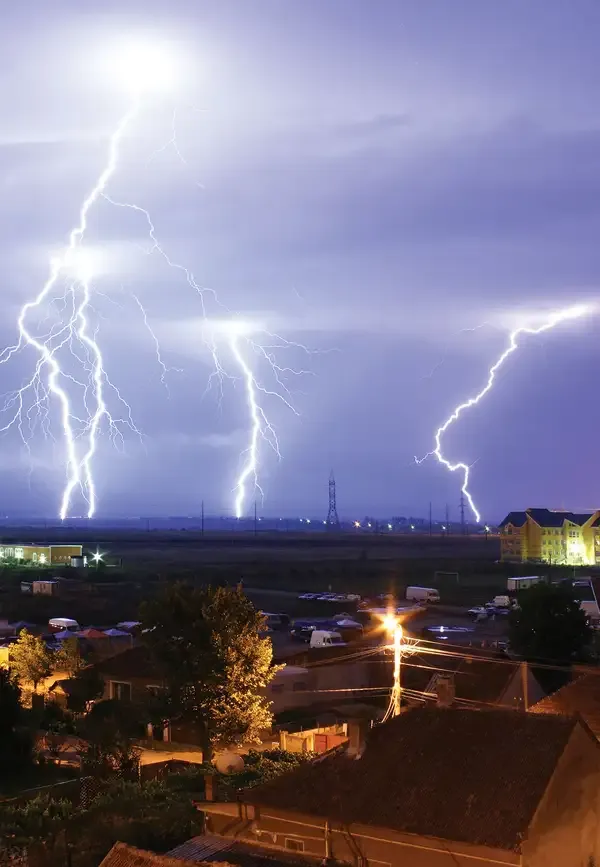- Home >
- Science
- > Technology
Does Ball Lightning Exist?
Ball lightning is a rare and mysterious atmospheric phenomenon that has intrigued scientists and observers for centuries. It typically appears during thunderstorms as a glowing, spherical object, varying in size and color, and can last from a few seconds to several minutes. Despite numerous eyewitness accounts, its exact nature remains elusive, with theories ranging from plasma formations to hallucinations induced by electromagnetic fields. While some researchers continue to study its potential causes, definitive scientific proof of its existence remains unconfirmed.

Ball lightning is one of the most intriguing phenomena in atmospheric science, often described as glowing, spherical objects that appear during thunderstorms. Despite numerous anecdotal accounts and some scientific investigations, the existence of ball lightning is still a topic of debate among researchers. In this article, we will explore the evidence for and against the existence of ball lightning, its possible explanations, and the ongoing research surrounding this mysterious phenomenon.
Historical Accounts of Ball Lightning
Throughout history, many cultures have reported sightings of ball lightning. These accounts often describe the phenomenon as glowing spheres that vary in size and color, floating in the air or moving erratically. Historical records date back to the 16th century, with notable mentions by scientists such as Benjamin Franklin and Michael Faraday. However, due to the sporadic and unpredictable nature of ball lightning, it has been challenging to study scientifically.
Scientific Investigations
Despite its elusive nature, researchers have attempted to investigate ball lightning through various scientific methods. Some of the key investigations include:
| Investigation | Year | Findings |
|---|---|---|
| Franklin's Lightning Experiments | 1752 | Documented electromagnetic phenomena associated with lightning |
| Faraday's Observations | 1832 | Proposed theories linking ball lightning to electrical discharges |
| Modern Laboratory Experiments | 1990s | Created ball lightning-like phenomena under controlled conditions |
These investigations have provided some insights into the characteristics of ball lightning, but definitive evidence of its existence remains elusive. Researchers are divided on whether ball lightning is a physical phenomenon or merely a psychological effect caused by the brain during intense storms.
Theories Explaining Ball Lightning
Several theories have been proposed to explain the phenomenon of ball lightning. Some of the most prominent include:
- Electrical Discharge Theory: This theory suggests that ball lightning is a result of electrical discharges in the atmosphere, possibly related to the ionization of air molecules during thunderstorms.
- Chemical Reactions: Some scientists believe that ball lightning may result from the combustion of silicon or other materials present in the atmosphere, leading to glowing spheres.
- Plasma Theory: According to this theory, ball lightning could be a form of plasma, a state of matter where gases become ionized, allowing them to emit light.
- Quantum Mechanics: A more unconventional approach considers the idea that ball lightning could be linked to quantum effects, suggesting that it may not behave like traditional matter.
While these theories provide potential explanations, none have been universally accepted, contributing to the ongoing debate regarding the existence of ball lightning.
Recent Research and Discoveries
In recent years, advancements in technology have allowed scientists to study ball lightning more closely. High-speed cameras, advanced sensors, and computer simulations have provided new insights into the characteristics of ball lightning and its behavior.
For instance, a study published in a reputable journal in 2020 utilized high-speed cameras to capture the movement of ball lightning-like phenomena. The results suggested that these spheres could exhibit self-replication and complex motion patterns, characteristics previously thought to be unique to living organisms.
Additionally, researchers have begun to explore the possibility of artificially creating ball lightning in laboratory settings, which could lead to new discoveries and applications in fields like energy generation and materials science.
Conclusion: Does Ball Lightning Exist?
The question of whether ball lightning exists remains unanswered, with ongoing debates and research efforts shedding light on the phenomenon. While there are numerous anecdotal accounts and some scientific investigations suggesting its existence, definitive evidence is still lacking. Theories abound, from electrical discharges to quantum mechanics, but no singular explanation has gained consensus among the scientific community.
As technology continues to advance, the possibility of understanding ball lightning may become more attainable. Future research may provide clearer answers and perhaps even lead to practical applications for this captivating phenomenon. Until then, ball lightning remains one of nature's most intriguing mysteries, captivating the imagination of both scientists and enthusiasts alike.












